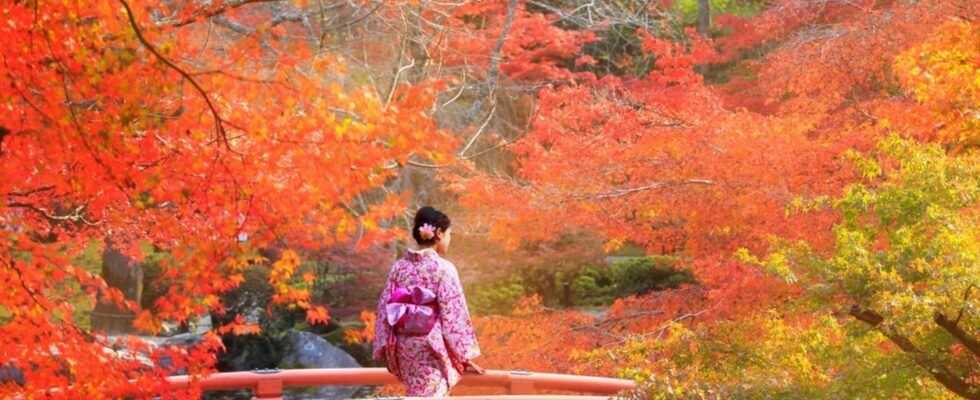Momijigari
The Japanese see red and go on “colorful leaf hunt”
When autumn turns the country into red tones, the Japanese celebrate momijigari.
© Patrick Photo / Shutterstock.com
In addition to hanami, there is a festival at which Japan celebrates nature and transience: in autumn, the “colorful leaf hunt” is blown.
Ginkgo, maple, beech, birch – they are all gradually changing their green summer dress for a colorful autumn outfit. The Indian Summer is particularly beautiful in the USA and Canada. But people also celebrate the colorful season in the land of cherry blossoms. The Japanese celebrate the Momijigari festival in and around Kyoto. Have fun with the “colorful leaf hunt”.
Of course you don’t go hunting with a shotgun. It is customary for the Japanese and anyone who wishes to visit parks and forests to enjoy the beautiful autumn colors. Unlike the Indian Summer or Indian Summer, the focus is not on the pure natural phenomenon. Rather, Momijigari is about spirituality and inner contemplation. For Buddhists it is a moment that is symbolically important as it is a reminder that life is fleeting.
Momijigari used to be reserved for the nobility
Each region of the country has certain places that are considered particularly suitable for Momijigari. Near Osaka, for example, there is the Minoh National Park, where a small waterfall is popular as an impressive backdrop for atmospheric Momiji photos. Special websites keep Japanese and foreign visitors up to date on where and when it is most beautiful.
The tradition of the autumn walk has its origins in the Heian period (794-1185). At that time, the nobility at the imperial court in Kyoto discovered the colorful walk for themselves. Later, in the Edo period (1603-1868), the “common people” also celebrated Momijigari – and still do today.
